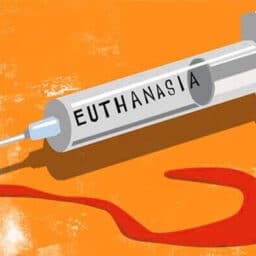INTRODUCTION
In July, 2021, the Punjab and Haryana High Court in the case of Aftab v. State of Haryana[1], issued a notice to the Government to look into the current age of majority and bring in necessary amendments to the century old Indian majority act[2]. With things changing rapidly in this modern 21st century, it is quintessential for the laws to keep up with such changes. To achieve this, the older legislations should be brought at par with the contemporary social and cultural values by fine-tuning the provisions according to the present needs and requirements of the legal system.
In this blog, the author will be looking at the Indian Majority Act, 1875, and analysing its relevance, especially regarding the age of majority and whether it needs to be changed.
THE INDIAN MAJORITY ACT
The Indian Majority Act, 1875, states the age of majority for the citizens of India for all legal purposes. Section 3 of the act defines the age of majority as eighteen years- ‘Every other person domiciled in [India] shall be deemed to have attained his majority when he shall have completed his age of eighteen years and not before’.[3]
The illustrations adjoining section 3 provide that if a person has a guardian appointed to him/her, then he/she will attain majority at the age of 21. However, in case no guardian is appointed, the age of majority will be 18 years. Section 4 of the Act shows the procedure to calculate the age of majority[4].
In 1999, there was an amendment brought to this act which omitted the word ‘Indian’ from section 1 and further clubbed sections 3 and 4 into one single section having two clauses 3(a) and 3(b). However, in 2015, this amendment was completely repealed by the Repealing and Amending Act, 2015[5].
AGE OF MAJORITY: AN ANALYSIS
In the case Preeti v Haryana[6], the Punjab and Haryana High Court stated that children attain both psychological and physiological maturity much before the age of majority and that the age must be revised accordingly. This brings us to the pertinent question about the legal age of majority and whether it is at par with the contemporary society and its norms.
Age of majority is defined as the age where a minor is considered to be an adult for all legal purposes. After a minor attains majority, he/she is deemed to be responsible for the consequences of all his/her actions and enjoys no immunity he/she had as a minor.
The age of majority for a minor is decided based on the age when a minor usually attains mental and physical maturity. This however depends on the contemporary societal values, various socio-economic factors and most importantly, what the society expects from its minors.
Historically, the age of majority was not always 18 years but rather differed from various groups and societies at different points of time. For example, the Barbarians fixed the age of majority to be 15, mainly because the children were considered old enough to carry weapons and take part in combats.[7] In ancient Sparta, however, the age of majority was 31. In the nineteenth century, with the advent of two world wars, age of majority was agreed to be fixed at 18 as it was the age when the minors were usually drafted into military services. Therefore, we can see that the societal and cultural practices and norms have always had a bearing on the determination of the age of majority.[8]
With rapid developments in almost all sectors in the present age, children are learning and understanding various things much faster and a lot earlier than the previous generations. Proper internet services and access to quality education is allowing the minors to gather knowledge, while better healthcare and food habits are allowing them to grow up healthy. This, in turn, is leading them to attain mental as well as physical maturity much earlier than the minors of the previous generations. Children nowadays are much smarter and capable and have almost the same level of understanding as the adults[9]. As the Japan Government approved a bill to lower the age of majority in 2022, the arguments given by people in favour were that lower age of majority can provide the society with a much stronger youth section which will essentially help a nation grow in many ways and it will also make teenagers independent financially and socially.
Although these arguments seem to make point, for having a better understanding, we have to analyse them in the current Indian context. In a third world country like India, where almost 40% children suffer from malnutrition[10] and the quality of education is poor[11], such level of maturity is hardly conceivable among the Indian minors and teenagers. The factors which are mainly responsible for developing physical and mental maturity in children are not uniformly available in India, and almost negligible in the still deprived, underdeveloped rural areas. Lowering the age of majority can also have negative consequences on the juvenile offenders, as they will be treated as adults by the criminal justice system, in turn pushing them towards being a hard-core criminal from an early age. Lowering the age can also deprive the underprivileged and orphans, who are living in State-sponsored facilities, and push them into a world of uncertainty.
Moreover, the main assumption behind lower age of majority sustaining and yielding efficient results lies in the fact that societal factors and expectations match the means available to the children for attaining such standards at such lower age.
CONCLUSION
Therefore, it is evident from the above analysis that despite Judiciary’s recent suggestions regarding revising the age of majority, lowering the age will not be a prudent step to take into consideration the overall socio-economic situation in India. As a result, the current age of majority, as recognised by the Indian majority act, 1875, should remain and any changes if required can be done in the future based on how society progresses.
Author(s) Name: Tridib Mandal (WB National University of Juridical Sciences, Kolkata)
References:
[1] CRWP-5888-2021
[2] Sparsh Upadhyay, ‘Indian Majority Act 150 Yr Old; Examine If Age Of Majority Needs To Be Revised”: P&H High Court Issues Notice To Centre, States/UT’ LiveLaw (27 July 2021) <https://www.livelaw.in/news-updates/indian-majority-act-age-of-majority-revise-punjab-haryana-high-court-notice-centre-states-ut-178252> last accessed on 8 August, 2021
[3] Indian Majority Act 1875, s 3
[4] Indian Majority Act 1875, s 4
[5] The Repealing and Amending Act 2015, sch 1
[6] 2020 (4) RCR (Criminal) 786
[7] T E James, ‘The Age of Majority’ (1960) 4 Am J Legal Hist 22
[8] Wayne Barnes, ‘Arrested Development: Rethinking the Contract Age of Majority for the Twenty-First Century Adolescent’ (2017) 76 Texas A&M University School of Law 406
[9] Tom Chivers, ‘The Flynn effect: are we really getting smarter?’ The Telegraph (31 October, 2014) <https://www.telegraph.co.uk/news/science/science-news/11200900/The-Flynn-effect-are-we-really-getting-smarter.html> last accessed on 8 August, 2021
[10] Subhomay Saha, Rashi Singh, ‘Child malnutrition in India: A systemic failure’ (2021), DownToEarth (15 April 2021) <https://www.downtoearth.org.in/blog/health/child-malnutrition-in-india-a-systemic-failure-76507#:~:text=The%20bane%20of%20child%20and,38.4%20and%2021.0%20per%20cent> last accessed on 8 August, 2021
[11] UNICEF, ‘Quality education Grade-appropriate education for all boys’ and girls’ <https://www.unicef.org/india/what-we-do/quality education#:~:text=Poor%20quality%20education%20is%20leading,learning%2C%20corporal%20punishment%20and%20discrimination> last accessed on 8 August, 2021
















